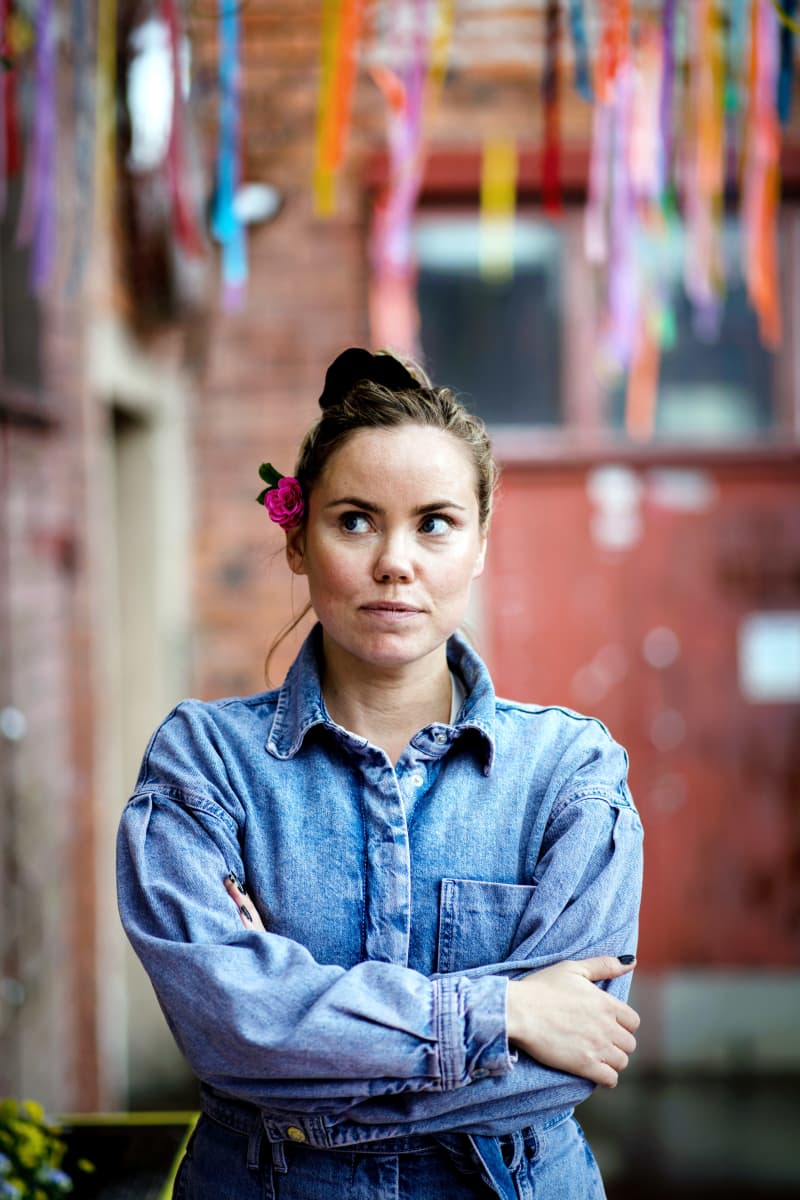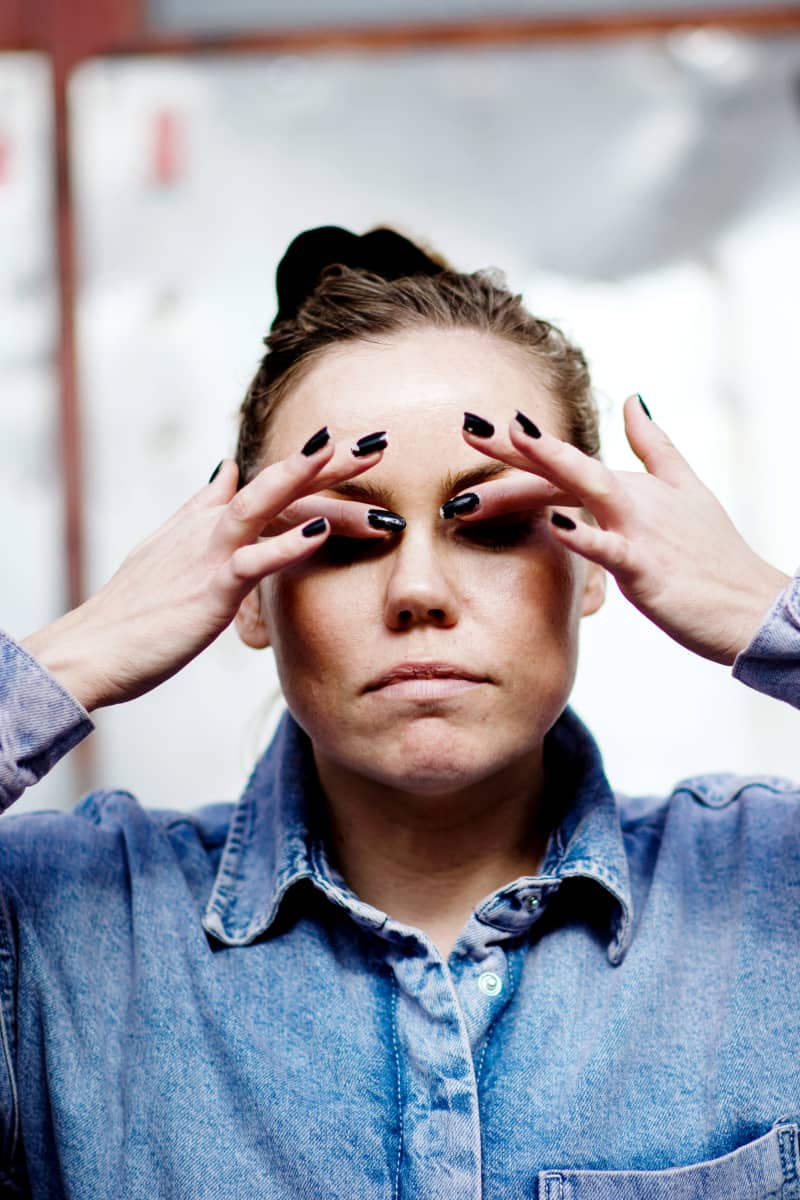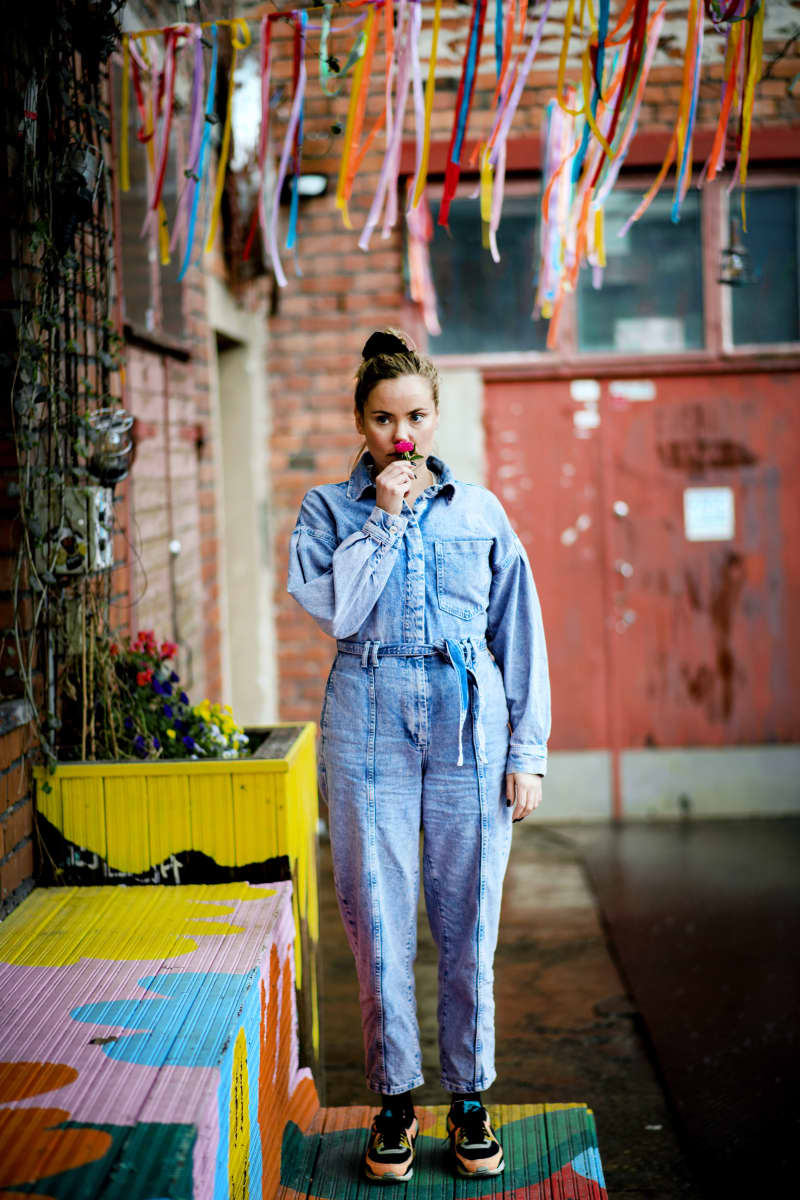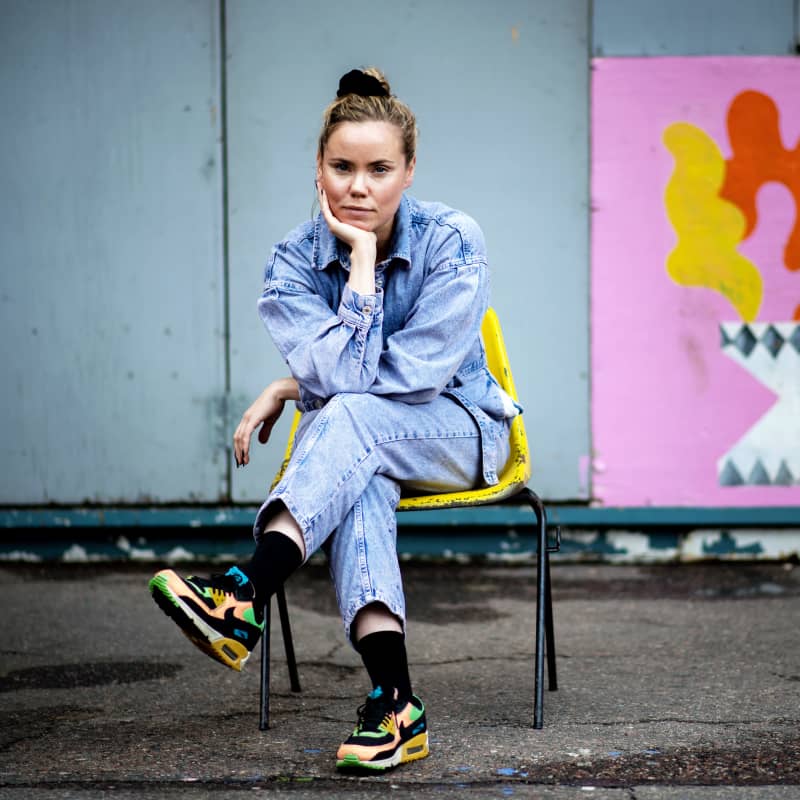A film has been made about the late queen of iskelmäpop, which shows the person behind the bimbo image. Cultural guest Sara Meller thinks Kikka was a hyperfeminine woman who enjoyed herself.
A little later, five-year-old Sara saw something enchanting on TV: Kika’s music video.
The little girl’s eye was not caught in the video by the hastily flashing nipple area, which marked Kika as a sex bomb throughout her career.
What enchanted Sara and the girls a little older than her was Kika’s extraordinary energy. Kika wore a neon pink miniskirt and top in a world that mostly wore gray tank tops. Kika had big hair, wild lipstick and a captivating smile. He seemed genuine and kind.

premieres on Wednesday. Sara Melleri, 36, plays the main role. It’s a dream role for him in many ways.
– I like to make big characters and Kikka is definitely like that. He is a really great entertainer and a great personality. She was a complex, multidimensional person: bright and bubbly, sensitive and strong, and didn’t take herself too seriously.
The deeper Melleri prepared for her role, the more correct the little girl’s interpretation of Kika felt.
– I listened to his radio interviews. The voice reveals a lot about a person. Kikka was a very good and personable speaker. He was really really kind and warm to everyone; even those who were not so kind to him.
Kikka was reviled and worshipped
Kikka brought joy to a time when the bill of the boom season fell to be paid. Everything was turning gray and Finland was limping towards a depression.
In addition to the little girls, half of Finland became intoxicated with Kika. Some were attracted by the open sexiness, others by the disarming immediacy, others by the naughty lyrics.
Kika became one of Finland’s best-selling female artists. According to Wikipedia, his albums had sold almost 330,000 copies by 2013.

Even though the rock police and other self-proclaimed intellectuals sneered, the people loved it.
Gikka was claimed to be a creation of the record companies, even though her style was completely her own. Although Kikka spoke sense and had attended schools, the blonde perm always revealed her in some circles as a dill, who can be talked about sadly,
Still: when Kikka was handing out nimmars in a shopping center in Tampere, thousands queued up to get their share.
Kikka hasn’t been around for ages telling her own version of her life. He died at the age of 41 in 2005.
The last meters of his career were marked by almost complete oblivion, a failed comeback attempt, drugs and pills. In Sara Meller’s opinion, ignoring Kika’s end-time intoxication would have been wrong towards the person’s truth.
– He had his own shadows and he did his best with them.
Kikka is interested
That story included hopefulness, happiness from popularity, enduring fading popularity, ruin and alcoholism.
-film’s creators want to remind you that behind the public image, Kika’s life also included deep friendship, an important relationship and the happiness of motherhood.

-the creators of the film wanted to show the person behind the titles and one-sentence adjectives.
– Kikka arouses conflicting feelings in people, which is always interesting. It tells about a phenomenon or an interesting historical person. I have come to the conclusion that people project their own fears and desires onto him, Melleri reflects.
\”Alcoholism is a national disease\”
The music business, especially in the early 1990s, was full of booze.
Many left before their time, the price of popularity was unreasonable. Intoxicants took star after star to an untimely grave.
In her independent art, Sara Melleri has also bitten the myths related to intoxicants. The theme was especially discussed in the frenzy of the Delta Venus theater group
As far as Finland is concerned, in Meller’s opinion, alcohol has always been almost the only acceptable license to feel emotions. Finland is a very alcohol-oriented country. According to Meller, alcoholism is a national disease that is not limited to the entertainment industry.
– After the wars, drug addictions have certainly helped to deal with painful issues. Without going into what Kika’s motivations were, I thought that at that time it was more the rule than the exception to drink before going on stage.

However, female artists’ addictions have been treated differently than men’s. They haven’t even been treated worse.
When a woman drowns at the bottom of a bottle, she is a victim. The man, on the other hand, is a great thinker wrestling with his demons, for whom this world was simply too much.
– movie tells a lot about more than Kika’s addiction, but it would have been unfair to her story to leave it out. I can’t think of many films where a woman’s addiction was dealt with.
In Meller’s opinion, the whole woman-man opposition is stuffy and old-fashioned. She hopes that the binary understanding of gender will finally be abandoned. It’s about people.
– I’m a bit disinterested in this, that men do this and women do that. Finnish cinema still has a long way to go before gender is dealt with more broadly. I look forward to the day when Actors belonging to sexual and gender minorities get to play the roles written for them instead of straight actors.
Kikka wanted to be a star
Thirty years ago, power belonged to the uncles of that time.
Sara Melleri states again that no one can really know what Kikka himself thought about chauvinism at the time. From this time on, no one can know if Kikka was a feminist of any kind.
– Does it even matter? It is gratifying when someone is empowered by what Kikka was and did. Yes, you can make her a feminist icon if you want. However, it is an unreasonable burden for anyone to be a role model for all women.

Everyone was hostage to the world of values \u200b\u200bat that time, some more than others.
– I think that Kikka just wanted to live the life of her dreams, liked the night and the club life and standing out. I think he sincerely wanted to be a star and the fire of performing can break through any wall, I know that about myself.
\”Kikka enjoyed herself\”
Kika’s open, joyful sexuality repeatedly led to the conclusion that boobs and brains cannot fit in the same body. In Ylen’s Sabatti program, a male reporter described Kikka to her face as a woman with everything below her shoulders.
Sara Melleri is tired of how the same old-fashioned dichotomy is still repeated in the 2020s: a woman is a whore or a madonna.
Women are expected to bare their skin in popular culture, but when they meet the expectations, they are punished for it. Despite that, many bravely stick to their own line and their freedom to express what they see best with their bodies.
– It is completely normalized that today, for example, on Instagram, performers, social media influencers and even activists are almost naked. It is a sign of today’s liberation and taking control of your own body. That’s great.
Although Kikka was loved, she was also belittled. Meller thinks it’s amazing how upright Kikka took the mockery.
– Despite everything, he was able to keep his own style. We still like to go with the crowd, and standing out from the crowd was even rarer in 1980s Finland. Kikka was a hyperfeminine star who enjoyed herself. That pleasure feels revolutionary even today..


